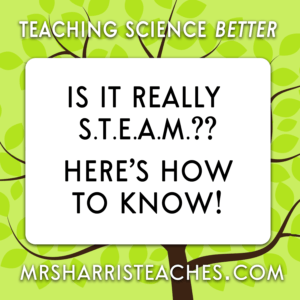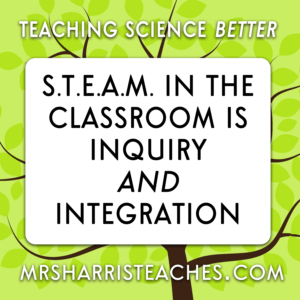Going beyond educational buzzwords: Are you really doing STEM or STEAM?
To sum it all up, STEAM is integration AND inquiry.
When it comes to the classroom, summer camp, or even our own kids, we all have the best intentions in involving children in meaningful learning experiences. For STEAM truly to be a pedagogical tool, it must be understood and applied as a pedagogical tool.
A focus on STEAM has the potential to engage children in powerful learning but the truth is a lot of “STEAM” lessons are simply art and craft projects. Now, I LOVE art and craft projects (seriously, look at my Pinterest) and firmly believe they are important. However, if the goal is to have a STEAM activity, make it a STEAM activity!
How can you tell if your lesson or activity is really STEAM? First, it helps to understand that history that led to STEAM.
It all starts with STEM, which originally was not even an educational term or strategy.
STEM was first used as an acronym to group together Science, Technology, Engineering, and Math career fields. The initial focus of STEM was to highlight career fields deemed important for innovation. The idea here is that STEM career fields are a key part of improving the economy. Soon after, STEM trickled into education because schools want to prepare students for the workplace.
When STEM was applied in the classroom, it mainly involved the integration of science, technology, engineering, and math topics. Educators, and others, were quick to point out that there was a huge gap missing – the humanities! STEM is situated in the real world, so of course you have to include the human element. The “A” was added to represent the art/humanities and created what we know now as STEAM.
Most educators learn about creating “integrated” lessons during their teacher training. Some educators, especially those trained in science, also learn about “inquiry’. STEAM blends these two ideas. Essentially, STEAM is the integration of science, technology, engineering, art, and math applied to inquiry. It sounds easy, but it is not. Integration is a complex instructional method that involves three different approaches (multidisciplinary, interdisciplinary or transdisciplinary). Inquiry is a process of supporting learners figure out a question. There continuum of support offered by the teacher in this process makes it confirmation, structured, guided, or open inquiry, and can include problem-based or project-based learning (yes, there’s a difference). STEAM is the stuff of real life. It is complicated, messy, and – in my opinion – fun.
So, how do you know if it is really STEAM?

Here’s my checklist to determine if it is STEAM:
- Are students exploring connections between two or more of the following: science, technology, engineering, art/humanities, and math? Or in other words, is it an integrated lesson?
- Are students involved in skills relevant to one or more STEAM disciplines? Or in other words, are the actions of students similar to actions of scientists, engineers, mathematicians, or any STEAM profession related to your activity?
- Are students trying to figure something out? Or in other words, is it inquiry?
- Are students involved in relevant connections to real life?
Notice the focus on STUDENTS. The students need to be involved in these connections, not just the teacher! If you answered yes to all these questions, it likely is STEAM. I tried to make this checklist short and sweet, but it is not perfect. To implement STEAM with finesse, you really need to have a deep understanding of the pedagogy of integration and inquiry!


Leave a Reply